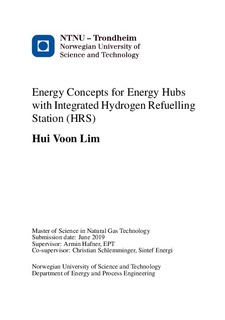| dc.description.abstract | As the world is emphasizing the urgent of the green energy transition, hydrogen undoubtedly is one of the best substitutions choices of as it can be produced by many robust and innovative technologies that available in the world. The recorded hydrogen activities in the adaptation of hydrogen as the new fuel sources in Norway remains slow, however, several major developments had recently been looked into. A Norwegians grocery wholesaler and transport company is concerned about the environmental issue and aimed to achieve zero emission within the organization. The company had started to invest in many renewable energy and clean transportation fuel development projects. Zero emission vehicles that could travel long distance is desired in order to achieve the zero emission on the road. An electrical car is unfortunately not favourable in this case and leads to hydrogen vehicles would be the only option left. A hydrogen refuelling station is important to ensure the vehicles are charged all the time. Hence, the great potential of new hydrogen energy
become the driver of this study to find out the best scenario that will accelerate the hydrogen market in Norway.
Taking the company situation as inspiration, an energy hub approach is utilized to integrated all the energy supply and demands. The boundary of this study was initially unclear. In order to minimize the freedom of changes and discussion, the project framework has been defined. Several technical arguments had been discussed to find out the optimum design for the energy hub. The different case study has been described and the particular model has been simulated in the steady-state conditions, using HySys software. Based on the results, the system designed is optimized and modified. The overall flow diagram of the designed system was then established.
Besides, an extended dynamic simulation that integrated the supermarket heat pump system and the hydrogen refuelling station cooling has been developed in Dymola. The different demand for hydrogen refuelling had been tested to study on the cooling demands requirements. Extended reviews had been done on the equipment that is available in the market. The energy hub designed, is based on the equipment available on the industrial scale. Hence, this system design is technically feasible and ready for development. | |
